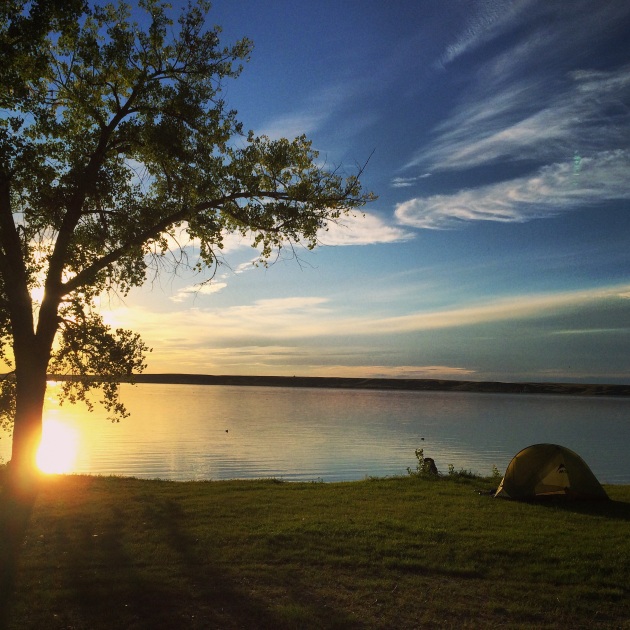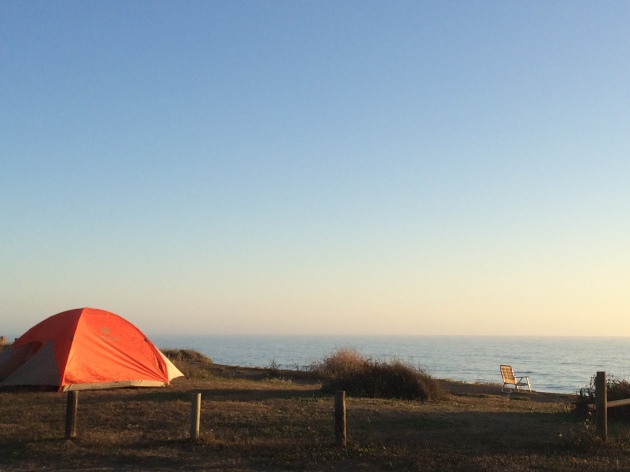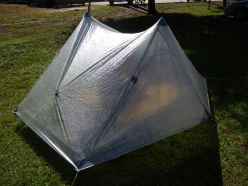Top Backpacking Tents of 2016
November 1, 2016 Leave a comment
So you’re ready for some backpacking, and want to start with the basics. Or maybe you’re experienced and looking for some new gear for that new trip you have lined up. Having a top notch tent in your pack is one of the best ways to increase comfort, enjoyment and safety on backcountry trips. But when you are starting to look for your new tent, you will find there are A LOT of options out there. Trying to find the tent that fits your needs can quickly become overwhelming.
I’m kind of a gear-head. I love my research. And having thru-hiked the Appalachian Trail and many other trails, I have the opportunity of knowing THE BEST people to ask when it comes to gear selection. Not only that, but during my own hiking experiences, I’ve researched and tested, got referred to many various backpacking tents, and narrowed them down to the very best of the best. Weight, cost, interior space, and weather protection are all factors in my choices.
I hope this post helps you find the best tent to suit your needs, keeping you warm, dry and protected in the outdoors for many years to come!
 Shwayzes Gear Guide: Tents.
Shwayzes Gear Guide: Tents.
Tent considerations
Cost – Cost is one of the biggest concerns for most people. You shouldn’t have to pay a small fortune for a tent. However, as most of you know, a little more money spent on a quality product protects you from various and unforseen setbacks encountered. Preparation is key.
Weight – A few ounces here and there seem like nothing before the trip. However, they add up and become consequential when you experience fatigue, knee pain, etc. Keeping your pack light is the #1 priority to stay healthy on long trips. I have seen too many injuries due to heavy packs in my time. To me, weight is critical. As one of the big 3 (heaviest items in your pack – tent, sleeping bag, sleeping pad), it’s essential to keep weight to a minimum with these items.
Protection – A backpacking tent that doesn’t protect you against mothernature is just dangerous. I backpacked with a couple that bought a $40 tent, and when the temperature dropped, they suffered. They also didn’t fair so well during rainstorms either. Be careful with extreme budget tents. Every tent on this list will keep you well protected from the elements.
Season Rating – Where are you hiking and how long? What kind of conditions are you expecting. Expect the unexpected. 3 season tents are the most popular, built for spring summer and fall trips. I’ve survived some winter hiking with my 3 season, when it dropped down to 13 degrees at night with some wind. I had a great sleeping bag, but that’s a different list. A good 3 season tent will have you isolated from bad weather, while still promoting air circulation on those hotter days.
Interior Space – Comfort, really. If you’re 6′ 3″ and your feet are touching against the end of the tent, you’re going to get wet. Including your sleeping bag. This is important to strike a balance between comfort and weight. I have chosen tents that maximize interior space, while keeping weight at a minimum. I like a spacious light weight tent, so I carry a 2p. If you are willing to carry a little extra weight, consider bumping up a size.
Capacity – How many people will you be traveling with? 2 person tents are the most popular, and for good reason. With recent tech designs and innovations, tent weight has been decreasing drastically, allowing a single person to carry a 2 person tent. There is not much difference in weight between a 1p and 2p tent. Group tents are heavier and less practical, and more meant for car camping. However, there are some good options I have listed in another section.
Durability – Light weight tents tend to be less durable than heavy weight tents. However, unless you are really rough with your gear, the tents I have provided in this list will last you many years, and thousands of miles. My current tent has lasted around 3000 trail miles, and there is absolutely nothing wrong with it. Flawless. My experience and research have shown me that if you treat a light weight tent well enough, they will last you thousands of miles, many more miles than the average backpacker. My professional opinion is to stick with the light weight tents.
Wall Construction – This gets a little too specific, but is important. Double wall tents come with 2 separate walls, the tent itself, and a rainfly. The advantage to this is that condensation will stay off the mesh inner wall, and stick to the rainfly. The other advantage is simply airflow on a cloudless night. Keep it on to stay warm, take it off when it is hot. Single wall tents have a built in rainfly, saving a little weight, and promote airflow to keep condensation down. However, condensation is inevitable, and when your sleeping bag gets soaked because of it, your next day is going to be rough. My opinion is to stick with a double wall tent.
Doors/Vestibule Space – Having 2 doors is helpful when 2 people are sharing a tent. As well as 2 vestibules. A vestibule is the space under the rainfly, between the tent and the rainfly, that you can keep gear in to prevent from getting wet, but also don’t have to cram into your tent. Vestibule space is very important to me. The tents I have listed are proven to fit all your needs, and are quite spacious.
Set up – Freestanding tents have the ability to be pitched anywhere, pop up tents are a synonym. They can be anchored down with stakes, and even into rock. These are generally preferred due to ease of set up, and how quick they can be set up and broken down. Non-freestanding tents use trekking poles or other methods to pop the tent up. They save weight by not needing tent poles, instead using line, trekking poles, or stakes. These are a little more time consuming, but I have met some hikers that absolutely love them. The weight is a huge plus for these. My preferred tent is a freestanding pop up tent.
Footprint – A footprint weighs next to nothing, and is what interferes with the ground touching the bottom of your tent. It is extra weight, but will protect your tent from abrasions, rocks etc. These are sometimes not included in tents, but are worth the purchase, and will be sold as an accessory to the tent. I recommend footprints just due to how grimy the ground can get.
Buy Online – Although I prefer to buy online because I can shop around for the cheapest deal, not all do. Check the sellers status before making a purchase, and ask about their return policy. If you are unsatisfied with your purchase, simply return to the seller. BUT, the advantage to this, is you are able to purchase the tent, and try it out on your own, before making the decision to keep it. I’ve purchased my tents online, haven’t had problems and always have ended up keeping them. But not before doing my diligent research.

Best Backpacking Tents of 2016
MSR Hubba Hubba Nx 

Weight: 3 lb. 7 oz.
Dimensions: 84″x 50″ floor, 39″ height
Design: 2 person, 3 season, freestanding, 2 doors, 2 vestibules, double wall.
Features: Set up and take down is made easier with a color coded hub and pole system. Two large StayDry™ doors ensure water does not drip into tent while doors are open (I never tried this during a real rain storm).
Uses: Ultralight backpacking, Backpacking, Camping
A very popular item among ultralight backpackers for a long time, this tent is partial to me, because I carried it with me as I thru-hiked the entire Appalachian Trail (2185.3 miles). I STILL have it. A rectangular floor and symmetrical shape allows hikers to spread out on opposite ends. The vertical side walls and end walls help maximize the interior. It is super easy to set up and take down, the vents help stay cool on hot nights, and the rain fly provides maximum protection against the elements. Although it is a bit heavier than other tents I have listed, the durability, design and popularity puts it on this list.
Accessories: I recommend picking up the MSR Hubba Hubba Nx footprint to increase durability. The tent is available in different sizes, the Hubba Nx 1p, Motha Hubba Nx 3p, and the Papa Hubba Nx 4p.
Big Agnes Copper Spur UL2 

Weight: 2 lb. 13 oz. Fast Fly Weight: 2 lb. 1 oz.
Dimensions: Floor – 29 sq. ft. – 90″ x 52″/42″. (Wider at head, narrower by feet). Vestibule – 9 + 9 sq. ft. Height – 42″.
Design: 2 person, 3 season, freestanding, 2 doors, 2 vestibules, double wall.
Features: 2 doors and 2 vestibules with 18 sq. ft. of vestibule space! A crossover pole for extra headroom. Double twisted thread for durability. All seams are sealed with waterproof, solvent-free polyurethane tape.
Uses: Long distance backpacking trips, ultralight backpacking, camping, section hiking, weekend warrior
The Big Agnes Copper Spur UL2 packs a solid punch for such light weight. Although light in weight, it has double twisted thread for extra strength and durability. Opposing mesh doors provide good ventilation, while allowing 2 people easy access to the tent. A spacious accommodation for 1 person, but sleeps two in a pinch. A good friend thru-hiked the Appalachian trail with this, and highly recommended this tent. It has built in mesh pockets for your gear.
Accessories: I recommend the Big Agnes Spur UL2 Footprint for extra durability. This tent also comes in a 1 person UL1 (2 lb. 3 oz.), a 3 person UL3 (3 lb. 11 0z.), and the four person UL4.
Nemo Hornet 2p Tent 

Weight: 2 lb.
Dimensions: Floor – 28 sq. ft. 85″ x 51/43″ (Larger at head, than at foot). Height – 40″. Vestibule space – 8 sq ft. x 8 sq ft.
Design: 2 person, 3 season, freestanding, 2 doors, 2 vestibules, double wall.
Features: Large side doors, a good amount of vestibule space, offers easy access in and out of tent. Extremely fast and easy set up, thanks to single hubbed pole, with ball and socket tips. Tech: Durable, featherlite NFL aluminum poles weigh less than nearly all poles on market.
Uses: Ultralight backpacking, Thru-hiking, Long distance hiking, Backpacking, Camping.
The Nemo Hornet 2p Tent is one of the lightest freestanding tents on the market. This is due to the technology used in its design. Light weight, yet still quite durable. The downside is less headroom than some of the other tents, but the plus side is it is a lot lighter, making this one of the top tents on the market. A couple more ounces than its 1p. version, but with an extra door and extra space, it is well worth the upgrade.
Accessories: I recommend picking up the Nemo Hornet 2p Footprint for extra durability. This is also available in a smaller Nemo Hornet 1P tent.
ZPacks Duplex 
Weight: 1 lb. 5 oz. (without poles)
Dimensions: Floor – 90″ x 45″. Height – 48″. Vestibule space – 20.75″ on each side.
Design: 2 person, 3 season, 2 doors, 2 vestibules, single wall, 2 trekking poles and 6 stakes min. for setup.
Features: Set up with two trekking poles to a peak height of 48″. 4 storm doors. Tarp overhangs floor by 4-5 inches on each side to prevent water from dripping onto floor.
Uses: Ultralight backpacking, long distance backpacking, backpacking, camping.



